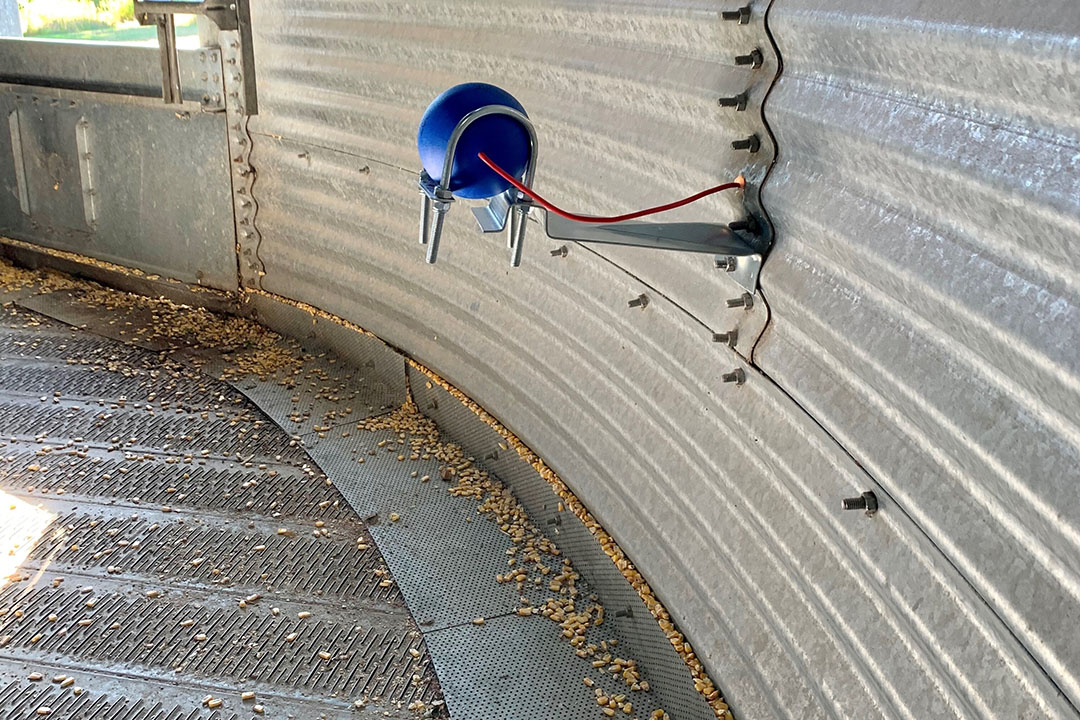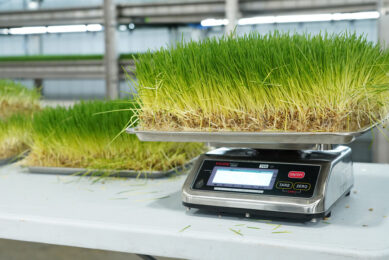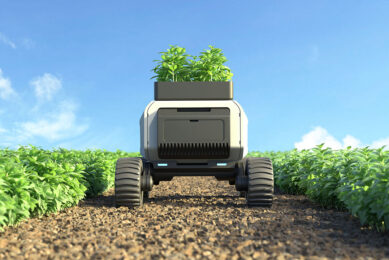TeleSense: Taking the guesswork out of grain storage

Keeping a constant watch on their stored grain is crucial for farmers or location managers. TeleSense delivers affordable and easy-to-use grain monitoring solutions that take the guesswork out of grain storage. How does it work? TeleSense CEO Naeem Zafar answers 5 questions.
TeleSense was founded in 2014 to apply IoT (Internet of Things) and advanced data analytics technology to solve problems in industries that had been relatively untouched by technology. After a few years examining different use cases, the company decided to focus on post-harvest grain storage and transportation. “We realised that this sector was in dire need of a technology-driven transformation, and there was room for tremendous value creation and growth,” says CEO Naeem Zafar.
The company has since worked with leading grain handling companies, cooperatives, and growers to develop innovative wireless technologies for remote monitoring. TeleSense have also developed an advanced AI-based software to help reduce the spoilage in grain through predictive analytics. Naeem Zafar says his company aims to reduce the human error involved in storage monitoring, to improve operational efficiency, and increase profitability in the agriculture sector.
What are the main potential problems with grain storage? When and how do these problems occur, and how big are the potential losses?
“Grain, once stored, never improves in quality, as it is a living organism. With the right combination of temperature and moisture, the organic activity can multiply in the stored grain and cause a wide variety of problems, ranging from mould / insect growth to aflatoxin build-up and heat damage. The heat damage can sometimes be bad enough to cause spontaneous combustion. All these factors impact the grain quality and consequently reduce its market value. Sometimes it can get so bad that a portion of grain must be completely thrown out and is not even good enough to be useful as animal feed.
This problem is worldwide; however, the climate does have an impact on the degree of spoilage. In cooler and dryer climates such as North America, the problem is milder, so the spoilage is about 1-2%, but in other parts of the world, the spoilage could be as high as 33%.
In terms of monetary value, in the developed world, the problem is worth about US$ 13.5 billion/year. The number becomes substantially larger, about US$ 71 billion/ year in regions such as India/China, where the grain is more prone to spoilage due to the climate conditions. If we focus solely on North America, we estimate the value of the problem to be about US$ 4.6 billion/year. That is a lot of grain being wasted.
With our combination of wireless technology and advanced software, our goal is not only to monitor these conditions as they occur, but also, in the future, to be able to predict and prevent these conditions before they occur.”

How does grain monitoring work? What equipment/tools does a farmer need?
“We have dramatically simplified the grain monitoring process by changing the form-factor. Instead of hanging expensive temperature cables on reinforced bin roofs, which can cost anywhere between US$ 20,000 – US$ 75,000 per bin, our proprietary spears/balls with wireless connectivity built into them are affordable and easy to install. Our typical solution is usually 1/4th of the cost of traditional alternatives, and rental options are also available.
You can insert a TeleSense Spear into a grain pile or install our SensorBalls into a storage unit and immediately start collecting temperature and moisture data. This data is then transmitted to the cloud, analysed using machine learning algorithms, and readily available to the user via the TeleSense App.
Our app constantly monitors for problems in the storage conditions and will send out alerts whenever necessary.”
In some cases, farmers have pre-existing temperature cables installed in their bins. In such a situation, our BuffaloBox supplements existing cable systems by making them wireless and enables remote monitoring so users can still get access to all the powerful features of the TeleSense App.
Our app constantly monitors for problems in the storage conditions and will send out alerts whenever necessary. In addition to alerts, we also provide prescriptive actions – steps our customers should take to solve the issue. However, this is an ongoing journey for us, and the quality of our insights and suggestions continuously improves as we collect and analyse more data.”
What does the TeleSense solution cost?
“Typically, our solution cost is 1.5 – 2 cents per bushel. After one year or so of usage, people see a value of 7 – 9 cents per bushel. Currently, we are focused on selling in North America, parts of Europe, and Australia. We are planning to expand into other areas within the next 18-24 months.”

Why should a farmer invest in grain monitoring?
“Farmers are involved in a business that offers thin profit margins. They must make sure that every cent of profit can be preserved. The last thing they‘d want is for a million-bushel grain pile to rot away while they were enjoying time with their family. Keeping a constant watch on their stored grain is crucial for farmers or location managers.
Furthermore, if the grain storage conditions are well-known, it is easier to make decisions about when to sell. Commodity prices change every day, and transportation costs fluctuate frequently, so the more information any farmer has about grain storage conditions, the better equipped they are to make profitable and beneficial choices.
For farmers who store grain for longer than a year, this kind of monitoring is absolutely critical.”
As far as investing in our technology is concerned, most of our customers make buying decisions during the harvest season when they are planning to store the harvested grain. If a farmer/grain handler is storing grain for more than 3 months at a time, this kind of monitoring is important. If the storage period is 6 months, it becomes essential, and for farmers who store grain for longer than a year, it is absolutely critical.
In some situations, monitoring is critical, irrespective of the storage period. For example, if corn with a moisture content greater than 15% is to be stored.
There is some degree of awareness in the market about the importance of grain storage monitoring. That is why farmers often open the bins and visually inspect the grain and even sniff it. Over the years, they have become quite good at sniffing out the problems, but there are many grain bin safety issues that come into play and advanced grain monitoring technology like TeleSense gives farmers a safer, more precise and automated way to ensure grain quality. Previously, it was simply not affordable for many farmers and grain handlers so the return on investment for traditional solutions did not justify the high costs. But now, TeleSense has solved that problem by delivering incredibly affordable and easy-to-use grain monitoring solutions that take the guesswork out of grain storage.”

Who owns the data? And is the data used to improve grain storage overall?
“Farmers own the data; TeleSense analyses it to deliver valuable insights. Yes, the data is used to improve the overall grain storage quality. We analyse the data from hundreds of locations and constantly fine-tune our algorithms based on the predicted versus the actual grain conditions. The data we collect is anonymised, averaged, and used to improve our understanding of what factors drive grain quality and how to manage them. As our algorithms evolve and our datasets expand exponentially, we can provide our customers with more precise suggestions and help them answer key storage-related questions like when to turn their fans on/off, how to reduce fan energy consumption, and in what order to sell their bins.
In the future, we want to enable our customers to not just respond to spoilage, but to be able to predict and prevent it.”
 Beheer
Beheer









 WP Admin
WP Admin  Bewerk bericht
Bewerk bericht